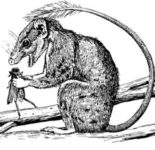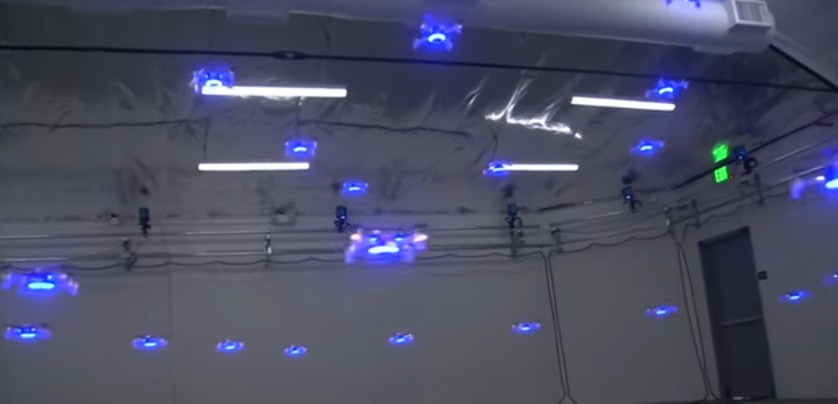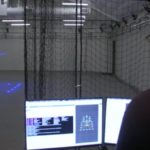Scientists at the University of Southern California are mastering the coordinated flight of ‘flocks’ of drones. Bob Mezan reports.
[somryv url=”vXuDJuQLq-A” size=”large” align=”center”]
Source: Reuters
Gallery:
A Letter from the Year 2030, Written by a Danish MP ('All Products Have Become Services')
This article, from the World Economic Forum, is part of the Annual Meeting of the Global Future Councils, and was written by Danish MP Ida Auken.
Welcome to the year 2030. Welcome to my city – or should I say, “our city”. I don’t own anything. I don’t own a car. I don’t own a house. I don’t own any appliances or any clothes.
It might seem odd to you, but it makes perfect sense for us in this city. Everything you considered a product, has now become a service. We have access to transportation, accommodation, food and all the things we need in our daily lives. One by one all these things became free, so it ended up not making sense for us to own much.
First communication became digitized and free to everyone. Then, when clean energy became free, things started to move quickly. Transportation dropped dramatically in price. It made no sense for us to own cars anymore, because we could call a driverless vehicle or a flying car for longer journeys within minutes. We started transporting ourselves in a much more organized and coordinated way when public transport became easier, quicker and more convenient than the car. Now I can hardly believe that we accepted congestion and traffic jams, not to mention the air pollution from combustion engines. What were we thinking?
Sometimes I use my bike when I go to see some of my friends. I enjoy the exercise and the ride. It kind of gets the soul to come along on the journey. Funny how some things seem never seem to lose their excitement: walking, biking, cooking, drawing and growing plants. It makes perfect sense and reminds us of how our culture emerged out of a close relationship with nature.
“Environmental problems seem far away”
In our city we don’t pay any rent, because someone else is using our free space whenever we do not need it. My living room is used for business meetings when I am not there.
Once in awhile, I will choose to cook for myself. It is easy – the necessary kitchen equipment is delivered at my door within minutes. Since transport became free, we stopped having all those things stuffed into our home. Why keep a pasta-maker and a crepe cooker crammed into our cupboards? We can just order them when we need them.
This also made the breakthrough of the circular economy easier. When products are turned into services, no one has an interest in things with a short life span. Everything is designed for durability, repairability and recyclability. The materials are flowing more quickly in our economy and can be transformed to new products pretty easily. Environmental problems seem far away, since we only use clean energy and clean production methods. The air is clean, the water is clean and nobody would dare to touch the protected areas of nature because they constitute such value to our well being. In the cities we have plenty of green space and plants and trees all over. I still do not understand why in the past we filled all free spots in the city with concrete.
The death of shopping
Shopping? I can’t really remember what that is. For most of us, it has been turned into choosing things to use. Sometimes I find this fun, and sometimes I just want the algorithm to do it for me. It knows my taste better than I do by now.
When AI and robots took over so much of our work, we suddenly had time to eat well, sleep well and spend time with other people. The concept of rush hour makes no sense anymore, since the work that we do can be done at any time. I don’t really know if I would call it work anymore. It is more like thinking-time, creation-time and development-time.
For a while, everything was turned into entertainment and people did not want to bother themselves with difficult issues. It was only at the last minute that we found out how to use all these new technologies for better purposes than just killing time.
“They live different kinds of lives outside of the city”
My biggest concern is all the people who do not live in our city. Those we lost on the way. Those who decided that it became too much, all this technology. Those who felt obsolete and useless when robots and AI took over big parts of our jobs. Those who got upset with the political system and turned against it. They live different kind of lives outside of the city. Some have formed little self-supplying communities. Others just stayed in the empty and abandoned houses in small 19th century villages.
Once in awhile I get annoyed about the fact that I have no real privacy. No where I can go and not be registered. I know that, somewhere, everything I do, think and dream of is recorded. I just hope that nobody will use it against me.
All in all, it is a good life. Much better than the path we were on, where it became so clear that we could not continue with the same model of growth. We had all these terrible things happening: lifestyle diseases, climate change, the refugee crisis, environmental degradation, completely congested cities, water pollution, air pollution, social unrest and unemployment. We lost way too many people before we realized that we could do things differently.
Via: World Economic Forum
Image: Vincent Callebaut Architects, who design future cities.
Animal Strategies, Sociobiological Anecdotes
This article is for listing animal strategies, habits and behaviors that make little stories like anecdotes. These are interesting and you hear them told sometimes. They’re like the animal sociobiology version of the cocktail party anecdote. If you know one please add it to the comments (When I get a chance, I’ll add the ones in the comments to the main page, along with credit to the person who shared the story).
A young moose passes through two crises during the period of declining dependence on its mother. The first is in the spring, when it is one year old and its mother has just given birth to a new calf. The  dam suddenly turns hostile and drives the yearling from her territory. The young moose lingers in the immediate vicinity and repeatedly attempts to return to the dam. In the fall, at the onset of the rutting season, the territorial barriers relax and the yearling is able to draw close to its mother again. But this new proximity precipitates the second crisis. Dams now treat their daughters as rivals, while bulls chase away the young males as if they were adults. At this stage the young animal finally becomes independent of its mother (Margaret Altmann, 1958, from A.O. Wilson’s Sociobiology).
dam suddenly turns hostile and drives the yearling from her territory. The young moose lingers in the immediate vicinity and repeatedly attempts to return to the dam. In the fall, at the onset of the rutting season, the territorial barriers relax and the yearling is able to draw close to its mother again. But this new proximity precipitates the second crisis. Dams now treat their daughters as rivals, while bulls chase away the young males as if they were adults. At this stage the young animal finally becomes independent of its mother (Margaret Altmann, 1958, from A.O. Wilson’s Sociobiology).
 The stingless bees (Meliponini) seal their eggs in waxen brood chambers and have no interaction with the developing young until they emerge as full adults, ready to go to work (A.O. Wilson’s Sociobiology).
The stingless bees (Meliponini) seal their eggs in waxen brood chambers and have no interaction with the developing young until they emerge as full adults, ready to go to work (A.O. Wilson’s Sociobiology).
Sexual pair bonding is strong in the tree shrew, and the male marks both the cage and his mate with scent. The male and female sleep together in a nest that is constructed mostly by the male.When the female becomes pregnant she builds a second nest, in which she later bears her young. The litter size is typically two. The mother soon leaves the helpless infants and returns to the first nest to rejoin the male. Thereafter, she visits the nursery only every 48 hours. The infants move  from one of her six nipples to another in an unsystematic way. After a few minutes the mother shakes them off and runs away. The young are left to groom themselves and, presumably, to clean out their own feces. The adults do not retrieve them when they are left outside the nest, and the infants do not utter distress calls. Parents forced to remain too close to their young often kill and eat them. When they are about 33 days old, the young tree shrews start emerging from their nest for short foraging trips, and the rhythm of maternal visits begins gradually to break down. At first the young return to their own nest at night and whenever they are frightened, but after 3 days they shift to the parental nest. Sexual maturity is reached at about 90 days of age. Afterward the young evidently scatter to find mates and territories of their own (A.O. Wilson’s Sociobiology).
from one of her six nipples to another in an unsystematic way. After a few minutes the mother shakes them off and runs away. The young are left to groom themselves and, presumably, to clean out their own feces. The adults do not retrieve them when they are left outside the nest, and the infants do not utter distress calls. Parents forced to remain too close to their young often kill and eat them. When they are about 33 days old, the young tree shrews start emerging from their nest for short foraging trips, and the rhythm of maternal visits begins gradually to break down. At first the young return to their own nest at night and whenever they are frightened, but after 3 days they shift to the parental nest. Sexual maturity is reached at about 90 days of age. Afterward the young evidently scatter to find mates and territories of their own (A.O. Wilson’s Sociobiology).
 " >
" >





